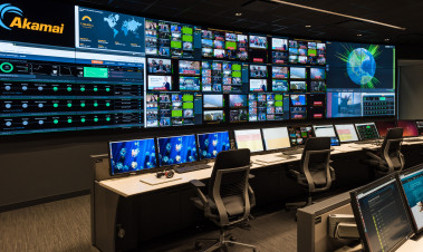Does the Screen Matter for Live Sports?
LONDON—Sports rights are now a target of social media players just as much as extending the reach of sports properties onto OTT platforms is a strategy of sport franchises and broadcasters.

Broadly, traditional players need to expand into social and online to reach millennials who are deserting studio-bound linear presentations for interactive, informal, and mostly free TV anywhere experiences.
Social giants, on the other hand, are increasingly moving into premium sports because the audience and profile of these businesses rely on scale, suggests Richard Broughton, research director for Ampere Analysis. “Sports are a mass market form of entertainment and capable of attracting large audiences with a high value to sponsors and advertisers.”
Examples of the former include BT’s live coverage of the UEFA Champions League on YouTube; Discovery’s deal with Snapchat to create a dedicated mobile channel around the Olympics (with content supplied by BuzzFeed); Sky’s investment in online sports network Whistle Sports; and the use by broadcasters, including Sky and the BBC, of Facebook Live to augment linear sports programming. In the latter camp is Twitter’s live stream of ten NFL matches (which also meets the NFL’s need to look beyond traditional networks).
All sides are dovetailing on internet delivery, which begs the question as to whether the quality of service between linear (satellite, cable) TV and broadband is indistinguishable.
“It can be equivalent, and in all honesty I think OTT can be better in some cases; for example, OTT can do 4K now,” says Shawn Carnahan, CTO, Telestream. “The big question is what device is the viewer using and is their prime concern quality or convenience?”
He adds, though, that OTT may not ever be able to achieve the very low latency of broadcast from a technical perspective. “In broadcast, each viewer has the exact same bandwidth and very low latency. I’m not sure OTT could ever achieve that same level.”
Get the TV Tech Newsletter
The professional video industry's #1 source for news, trends and product and tech information. Sign up below.
Telestream has introduced Lightspeed Live Stream to bring broadcasts and OTT together in the live space. The solution is designed to provide high quality encoding and control the amount of bandwidth available between production and distribution, as well as the amount available between distribution and the end user.
NeuLion’s EVP and co-founder Chris Wagner is in no doubt. “Online is better. Satellite and cable deliver at 30fps. We deliver at 4K at 60fps [NeuLion streamed El Clásico’ Barcelona Real Madrid match live in 4K 60fps over the NeuLion Digital Platform to Sony 4K TVs in April].”
NeuLion was signed by Eleven Sports Network to stream live (and VoD) coverage of La Liga, UEFA Euro 2016, Formula One and the FA Cup Final to subscribers in Belgium, Luxembourg, Poland, Singapore and Taiwan. “Digital delivery of live video is better and looks better than cable,” says Wagner. “Satellite and cable platforms are being replaced by digitally delivered video.”
Ian Munford, director of product marketing, media solutions for Akamai, says the industry has reached the point where good HD quality live streams can be delivered with reliability. “We have the luxury in the UK of a great HD TV service. We can easily surpass that.”
For Superbowl 50, Akamai saw a “dramatic increase in every single viewing metric” says Munford. In 2015, it counted 2.5 million viewers concurrently streaming the event live. This year, it peaked at four million. “The average viewing time increased from 84 to 101 minutes and we saw a big jump in bit rate from a 3.5Mb average to 4.5Mb average. This tells us that there’s a shift toward watching major sports using an OTT service and away from snacking to long form viewing.”
There were reports, though, that online viewers of SB50 did not receive a buffer-free experience (not necessarily to do with any of Akamai’s involvement). The transition to HTTP-based streaming may have enabled OTT delivery, but it inherently introduces latency.
A study by network performance analytics firm IneoQuest (conducted before SB50) found that that sports buffering inflicted rage in viewers with two out of five consumers likely to wait only 10 seconds or less for the video to resume, or they leave the stream.
“When you’re using HTTP streaming technology, there can be a challenge from the camera through to the playing device,” says Munford. “Some things are not in the rights owner’s control.”
One issue is the shift in bit rate, where the live stream pixelates or blurs on account of ABR. “Dramatic shifts do impact the viewer experience,” says Munford. “We’re seeing quite high abandonment rates as a result.”
The content delivery network (CDN) has a number of Media Services Live delivery technologies designed to reduce latency. Its accelerated ingest capabilities minimize the amount of time live video streams take to reach the CDN from their origination point. It uses HTTP/UDP to prevent packet loss and speed the transit of content, and make it easier to handle unpredictable peaks. It will also use multicasting and peer-assisted delivery using WebRTC.
It also opened a Broadcast Operations Control Center at its Cambridge, Mass., headquarters to monitor the reliability of OTT streams around major events like the Rio Olympics. “During London 2012, online traffic peaked at about a [one] Terabit per second [Tbps],” reveals Munford. “We expect peaks globally of between 15-18Tbps during Rio to set new global records in terms of online streaming traffic.”
Akamai forecasts that 500 million viewers will soon be watching prime time live sports online. “With 500 million online viewers, we need 1,500Tbps. Today we do 32Tbps [at peak], so you can see the huge gap we have to bridge,” says Munford.
“Any organization looking to deliver high quality scaled events needs to plan how to deal with very large peaks of audience,” he says. “It’s a bit like a power surge. Peaks can be unpredictable.”
Carnahan points out that no one would ever know about latency if it wasn’t for ‘back channels’ such as Twitter providing information about a live sporting event. “Tweets from my friends may be talking about something I haven’t seen yet, due to latency on my OTT feed to my device. However, it can be down as low as under 30 seconds, possibly under 15 seconds.”
Wagner counters, “You can’t compare video streaming to texting. It’s like watching a match live but listening to the radio commentary. Video quality and latency go hand in glove. If you want no latency then you’ll get video quality at 800kbps.”
With 4K in particular, the caveat is the last mile to the home. “When we deliver 4K, we are reliant on end user bandwidth,” says Munford. “We are seeing an average 13Mbps [for 4K] and for that we need good fibre in the home. The technology is there, we can surpass [this speed] and we’re confident we will continue to push those boundaries.”
Verizon claims to have reduced latency on live 4K online delivery to four milliseconds, for delivery of content including San Francisco 49ers pre-game coverage over the UltraFlix network. However, the industry norm for streaming HD content is still only 720p.
BEYOND THE TV EXPERIENCE
Viewers will accept buffering and some pixelation due to ABR for the trade-off of interactivity and anywhere viewing. “It’s a bit like the transition of music from CDs to streams; the quality is down but the fact that I can listen to it wherever I am is a bonus,” says Carlo De Marchis, chief product and marketing officer at online video sports specialist Deltatre.
Beyond a simple simulcast of the live video is the opportunity with OTT to create what De Marchis calls the “beyond TV experience”.
“In Diva [deltatre ’s online platform] you can multi-angle synchronized feeds of up to 12 cameras available for review after a few seconds. We have timeline markers for pausing the live stream and playback of key incidents. There is social media interaction. There will be greater levels of audio choice and, in future, we will take the clean feed with no graphics and send it to a device where the user will define what graphics makes sense to them.”
For live events, one of the immediate opportunities is to stream additional content (such as alternate camera angles, secondary audio, etc.) in addition to the broadcast feed. “Eventually, there will be an opportunity to stream additional content that is intended for a VR environment,” says Carnahan, adding that Telestream is investigating this. “An interesting case is to imagine a crowd-sourced production where a central location could be getting feeds from mobile users. Multi-camera production sourced from the crowd, perfect for sports.”
Armed with its 10-match (non-exclusive) Thursday night NFL deal, Twitter is trying to turn a second screen experience into a first screen experience, suggests Carnahan. “Instead of watching TV and tweeting about it, it will all be on Twitter. It remains to be seen how many people will turn to Twitter to ‘watch TV.’ It’s an experiment. The issue is the trade-off between image quality for an enhanced user experience. Twitter is betting that the enhanced social experience of watching NFL football on their platform will, for some, outweigh the benefits of a traditional TV viewing experience. Twitter is not aiming to be just a second screen; they are changing the viewing experience. For some, this may be worth it. Time will tell.”
This story originally appeared in TVT's sister publication TVB Europe.
Adrian Pennington is a journalist specialising in film and TV production. His work has appeared in The Guardian, RTS Television, Variety, British Cinematographer, Premiere and The Hollywood Reporter. Adrian has edited several publications, co-written a book on stereoscopic 3D and is copywriter of marketing materials for the industry. Follow him @pennington1

